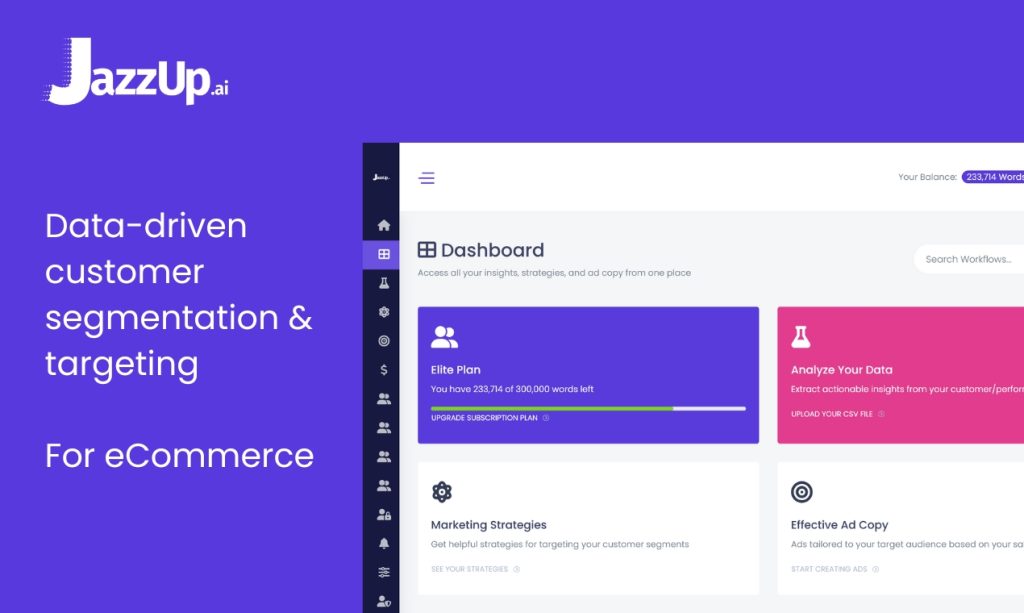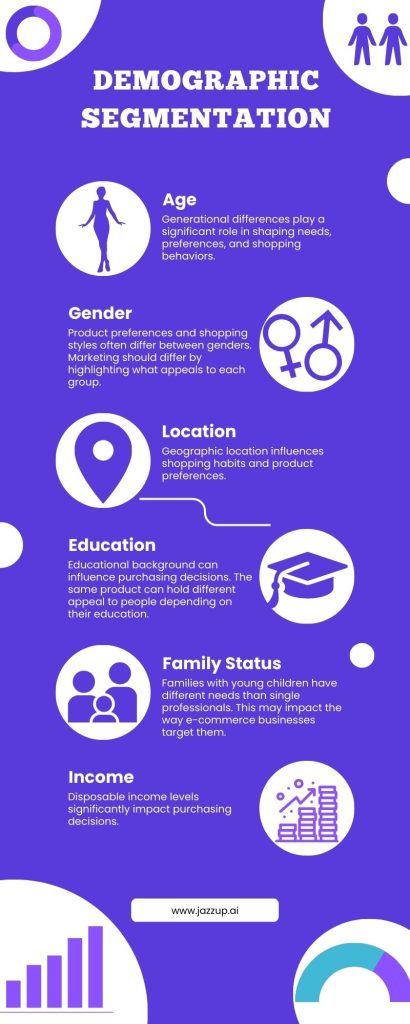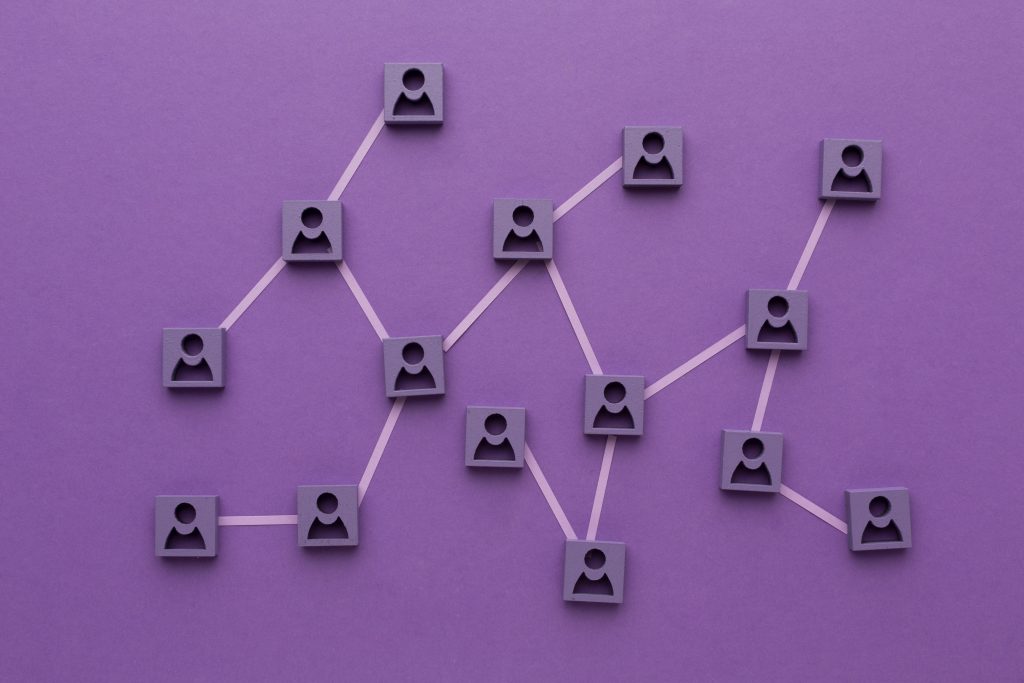
Introduction
In today’s crowded e-commerce space, simply understanding your target audience’s age, income, and location (demographics) isn’t enough. To truly connect with your customers and drive sales, you need to delve deeper into their psychology. This is where psychographic segmentation comes in.
Psychographic segmentation goes beyond demographics, grouping customers based on their values, beliefs, interests, personality traits, lifestyles, and social status. Understanding these psychological characteristics allows you to create highly targeted marketing campaigns, personalize the customer experience, and ultimately build stronger customer relationships.
The Power of Psychographic Segmentation: Statistics and Reports
The benefits of psychographic segmentation are undeniable. Consider these compelling statistics:
- 3% – 5%: McKinsey & Company reports that retailers saw an increase of about 3% to 5% in ROI for promoted sales, showing that segmentation can effectively improve marketing outcomes.
- 50%: This report from Thomson Data claims that non-targeted campaigns show a 50% lower CTR. Customers feel more valued with targeted campaigns, resulting in better customer experience and brand loyalty.
- 4%: Only 4% of companies segment with multiple segment types. Layering segmentation strategies leads to better outcomes
- 25%: Segmentation can help businesses increase customer lifetime value (CLTV) by up to 25%
These statistics highlight the growing importance of personalization in e-commerce, and psychographic segmentation plays a crucial role in achieving this. By understanding your customers’ deeper motivations and aspirations, you can tailor messaging, product recommendations, and website experiences that resonate personally, leading to increased conversions and customer loyalty.
Creating Buyer Personas with Psychographic Segmentation

While demographics provide a basic understanding of your target audience, they don’t reveal the “why” behind their purchasing decisions or create a wholistic buyer persona that can help brands target customers effectively. Psychographic segmenhntation explores the psychological makeup of your customers, offering insights into:
- Values: What principles are important to them? Do they prioritize sustainability, social responsibility, or luxury experiences?
- Beliefs: What are their core convictions about the world and the products they buy?
- Interests: What are their hobbies and passions? What kind of content do they consume?
- Personality Traits: Are they extroverted or introverted? Do they value practicality or innovation?
- Lifestyles: How do they spend their time? What are their daily routines and aspirations?
- Social Status: How do they perceive themselves within society? What image do they want to project?
Uncovering these psychological dimensions will provide a deeper understanding of your customers’ motivations, needs, and pain points. This empowers you to craft marketing campaigns and design website experiences that speak directly to their desires and encourage them to take action.
Examples of e-Commerce Psychographic Segmentation in Action
Let’s explore some real-world examples of how e-commerce businesses leverage psychographic segmentation to achieve success:
The Eco-Conscious Consumer
An online clothing store identifies a segment of customers who value sustainability and ethical production practices. They target this segment with marketing campaigns highlighting their use of organic materials and fair-labor practices. They might also partner with environmental organizations to further bolster their eco-friendly image.
Identifying Eco-Conscious Customers: Psychographic Factors
Here are some psychographic factors that can help you identify eco-conscious customers for your online clothing store:
- Values: They prioritize environmental sustainability and ethical production practices.
- Beliefs: They believe in supporting brands that positively impact the planet and society.
- Interests: They follow eco-friendly blogs, social media accounts, and influencers.
- Lifestyles: They actively participate in eco-conscious activities like recycling, upcycling, and supporting local businesses.
The Tech-Savvy Early Adopter
Another segment might consist of tech-savvy early adopters who are always on the lookout for the latest gadgets and trends. This segment requires a different approach:
- Marketing Campaigns: Highlight the innovative features and cutting-edge technology of your products.
- Website Experience: Offer a sleek, user-friendly website with detailed product specifications and interactive features like 360-degree product views.
- Social Media Engagement: Actively engage with this segment on social media platforms they frequent, showcasing new product launches and user-generated content.
The Busy Professional
For a busy professional segment, convenience is paramount:
- Marketing Campaigns: Focus on the time-saving benefits of your products and services.
- Website Experience: Offer a streamlined checkout process with guest checkout options and multiple payment methods.
- Personalized Recommendations: Utilize browsing behavior data to recommend products that complement their existing purchases, saving them time searching for additional items.
How to Implement Psychographic Segmentation in Your E-commerce Business
Now that you’ve seen the power of psychographic segmentation in action, let’s explore how you can implement it in your own online store:
1. Gather Customer Data
The foundation of successful psychographic segmentation lies in data collection. Here are various sources to consider:
- Website Analytics: Tools like Google Analytics provide insights into browsing behavior, time spent on product pages, and purchase history.
- Customer Surveys: Develop surveys that gather data on customer values, interests, and shopping motivations.
- Social Media Engagement: Analyze customer interactions on social media platforms to understand their preferences and sentiments.
- CRM Systems: Utilize your Customer Relationship Management (CRM) system to gather data on past purchases and customer interactions.
Psychographic Segmentation With JazzUp AI

After you’ve gathered customer data, it’s important to analyse the data and develop customer profiles and segments from your insights.
JazzUp AI uses machine learning to analyse vast datasets in minutes, providing insights to redefine your e-commerce business. JazzUp provides in-depth analysis on customer behaviour, sales trends and channel behaviour. JazzUp also analyzes your inventory and provides detailed actionable reports.
How JazzUp AI works
Customer & Inventory Data Analytics: JazzUp analyses your customer data from Shopify or Wix. You can upload data via CSV and gain insights in seconds. Our ML models provide forecasts on sales trends, upcoming market shifts, and inventory predictions, keeping surprises at bay. You’ll better understand which products resonate most with different segments of your customer base, and which might be going unnoticed.
Marketing Strategies and Copy: JazzUp doesn’t just provide insights gleaned from your data. We also provide marketing strategy for each of the segments and ad copy to effectively reach each segment. From the knowledge of your customers and their respective segments, we’ll provide the marketing strategy to reach them where they are, and the copy to convert them to paying customers.
Ready to try out the magic of JazzUp AI? Sign up today
2. Develop Customer Profiles
By combining data from various sources, create rich customer profiles that capture the psychological makeup of your audience. These profiles should paint a picture of your ideal customer beyond demographics, encompassing their values, interests, and lifestyles.
3. Segment Your Audience
Segment your audience into distinct groups with similar psychographic characteristics based on your customer profiles. Consider using a combination of segmentation criteria to create more granular and impactful segments.
4. Craft Targeted Marketing Campaigns
Utilize your customer segments to develop targeted marketing campaigns that resonate more deeply. This could involve:
- Personalized Email Marketing: Send targeted emails with product recommendations, promotions, and content tailored to each segment’s specific interests and values.
- Social Media Advertising: Leverage social media platforms that allow targeting based on interests and online behavior to reach specific customer segments.
- Website Personalization: Personalize the website experience based on user behavior and psychographic data. This could involve showcasing relevant product recommendations, highlighting features most appealing to specific segments, and offering content that aligns with their interests.
Measuring the Success of Psychographic Segmentation
While increased sales are a fantastic outcome, measuring the success of your psychographic segmentation goes beyond simply tracking conversion rates. It’s about understanding the long-term impact on customer relationships and overall business health. Here’s how to delve deeper and analyze key metrics to ensure your strategies are delivering optimal results:
Conversion Rates
Conversion rates remain a crucial metric. Segment your conversion rates by customer group to see how targeted messaging and product recommendations influence specific segments. For example, if your “Eco-Conscious” segment exhibits a higher conversion rate for sustainable product lines than the overall average, this validates your psychographic targeting for that group. Similarly, track email open rates and click-through rates for segmented campaigns. Increased engagement within specific segments indicates your messaging resonates with their interests and values.
Customer Lifetime Value (CLTV)
Psychographic segmentation aims to build strong customer relationships beyond a single purchase. Therefore, Customer Lifetime Value (CLTV) is a vital metric to consider. CLTV calculates a customer’s total revenue throughout their relationship with your brand. By segmenting CLTV data, you can see if specific customer profiles (e.g., “Tech-Savvy Early Adopters”) tend to have higher lifetime value. This indicates a loyal customer base willing to invest in your brand’s latest offerings. Effective segmentation strategies that cater to different needs and preferences can foster increased customer loyalty and ultimately translate to a higher overall CLTV.
Customer Engagement
Psychographic segmentation isn’t just about driving conversions; it’s about fostering ongoing customer engagement. Track metrics like email open rates, click-through rates, website visit duration, and social media interaction for each segment. Do customers within a specific segment (e.g., “Busy Professionals”) spend more time browsing product categories relevant to their needs? Do they actively engage with informative blog posts or social media content tailored to their interests? Higher engagement across these channels signifies that your targeted strategies are resonating with your audience. This ongoing dialogue builds trust and loyalty, ultimately leading to higher customer retention rates.
A/B Testing and Refinement
Remember, psychographic segmentation is an iterative process. Utilize A/B testing to compare different segmentation strategies and marketing messages for each customer group. Analyze which approaches yield the best results in terms of conversions, engagement, and CLTV. Continuously refine your segmentation criteria and tailor your marketing tactics based on data insights. By embracing a data-driven approach and constantly optimizing your strategies, you can ensure your psychographic segmentation efforts deliver long-term success for your e-commerce business.
Measuring these key metrics and adopting a data-driven approach will help you gain a comprehensive understanding of the impact your psychographic segmentation has on customer behavior and overall business growth. This empowers you to refine your strategies, build stronger customer relationships, and achieve sustainable success in the competitive world of e-commerce.
Psychographic Segmentation in Action: Real-World Brand Examples
1. Patagonia: Appealing to the Eco-Conscious Adventurer
Patagonia, the outdoor apparel and gear company, is a prime example of a brand that utilizes psychographic segmentation to target a specific customer profile. They focus on the eco-conscious adventurer who values sustainability, environmental responsibility, and a love for the outdoors.
- Psychographic Targeting: Patagonia’s marketing campaigns highlight their commitment to environmental activism, using recycled materials in their products, and supporting grassroots environmental organizations. They showcase athletes and adventurers who embody these values, further connecting with their target audience.
- Website Experience: The Patagonia website features stunning visuals of nature and exploration, alongside detailed product descriptions that emphasize durability, performance, and environmental impact. They offer repair guides and sustainability initiatives, appealing to the eco-conscious mindset.
- Social Media Strategy: Patagonia actively engages on social media platforms popular with outdoor enthusiasts, sharing inspiring stories, breathtaking landscapes, and calls to action for environmental causes. This fosters a sense of community and reinforces their brand identity.
Patagonia builds a strong emotional connection that goes beyond just selling products. They position themselves as a brand that aligns with their customers’ desire to explore the outdoors responsibly, fostering loyalty and driving sales.
2. Nike: Fueling the Dreams of Aspiring Athletes (and Weekend Warriors)
Nike, the global sportswear giant, leverages psychographic segmentation to target a diverse range of customers. One key segment is the aspiring athlete, someone who values competition, pushing their limits, and achieving personal bests.
- Psychographic Targeting: Nike’s marketing campaigns often feature elite athletes showcasing peak performance and iconic moments in sports history. They use motivational slogans like “Just Do It” to inspire viewers to embrace their athletic potential.
- Product Innovation: Nike consistently develops innovative athletic wear and footwear, emphasizing features like performance enhancement, comfort, and cutting-edge technology. This resonates with customers who value pushing their limits and achieving peak performance.
- Community Building: Through their Nike+ app and social media channels, Nike fosters a strong community of athletes and fitness enthusiasts. Users can track their progress, share goals, and connect with others who share their passion for sports.
Nike positions itself as more than just a clothing brand, by understanding the aspirations and motivations of aspiring athletes. In summary, It becomes a partner in its customers’ fitness journeys, building brand loyalty and driving performance apparel and footwear sales.
3. The Bouqs Co.: Crafting the Perfect Floral Experience for the Emotionally-Driven Consumer
The Bouqs Co., an online flower delivery service, leverages psychographic segmentation to target customers who use flowers to express emotions and connect with loved ones. They focus on the emotionally-driven consumer, someone who values meaningful gestures, personalization, and convenience.
- Psychographic Targeting: The Bouqs Co.’s marketing campaigns emphasize the emotional impact of flowers, showcasing stories of love, gratitude, and celebration. They offer various flower arrangements with evocative names that resonate with different emotions.
- Personalized Recommendations: Their website allows customers to choose arrangements based on the occasion and the recipient’s personality. They also offer add-ons like handwritten notes and gourmet chocolates, fostering a more personal touch.
- Convenience and Transparency: The Bouqs Co. prioritizes a convenient online ordering process and fast delivery options. They provide information about the flower source and commitment to fair labor practices, appealing to customers who value ethical sourcing and transparency.
In conclusion, The Bouqs Co. differentiates itself from traditional florists by understanding the emotional motivations behind flower purchases. They cater to the desire for personalized gestures and a seamless online experience, fostering customer loyalty and driving sales in the competitive floral market.
These are just a few examples of how brands leverage psychographic segmentation to target specific customer groups and achieve success. By delving deeper into the “why” behind customer behavior, you can craft marketing strategies that resonate personally, build stronger relationships, and ultimately grow your e-commerce business.
Looking Forward: Advanced Tools for Psychographic Segmentation
The future of psychographic segmentation is bright, with advancements in technology offering exciting possibilities:
- Artificial Intelligence (AI) and Machine Learning (ML): These technologies will allow for more sophisticated data analysis, enabling you to uncover hidden patterns in customer behavior and identify even more granular segmentation opportunities.
- Advanced Customer Data Platforms (CDPs): CDPs will provide a central hub for all your customer data, allowing you to create unified customer profiles and personalize experiences across different channels with even greater effectiveness.
- Emerging Data Sources: New data sources like social media listening tools and website heatmaps will offer deeper insights into customer sentiment and behavior, further enriching your psychographic segmentation strategies.
JazzUp AI for Advanced Psychographic Segmentation
JazzUp AI system analyzes the purchasing behavior, browsing habits , and other relevant customer data. Using sophisticated machine learning models, it then segments your customers into distinct groups based on shared characteristics, ensuring that each segment is well-defined and actionable for targeted marketing. JazzUp AI’s targeting feature provides you with insights on the preferences and behaviors of your segmented customers. This allows for tailored marketing campaigns that resonate with specific groups, leading to higher engagement, conversions, and ROI.
By embracing these advancements and continuously refining your approach, you can ensure your psychographic segmentation strategies stay ahead of the curve, delivering exceptional customer experiences and propelling your e-commerce business towards sustainable success. Ready to create the best personalized experience for your customers? Explore psychographic segmentation with JazzUp AI.
Conclusion
Psychographic segmentation empowers you to move beyond demographics and delve into the “why” behind customer actions. By leveraging data to create customer profiles, craft targeted marketing campaigns, and personalize the customer experience, you can build stronger customer relationships, drive sales, and achieve long-term growth for your e-commerce business. Remember, the key to unlocking the full potential of your customer base lies in understanding their behavior – and data-driven psychographic segmentation holds the power to make that understanding a reality.
Ready to leverage the power of psychographic segmentation in your e-commerce business? Start by identifying your customer data sources, develop detailed customer profiles, and segment your audience based on their unique psychological characteristics. Craft targeted marketing campaigns and personalize the customer journey to build stronger relationships and drive sales. Remember, psychographic segmentation is an ongoing process, so continuously test, refine, and adapt your approach to maximize its effectiveness. By understanding your customers on a deeper level, you can unlock new levels of engagement and growth in the ever-competitive world of online shopping.













